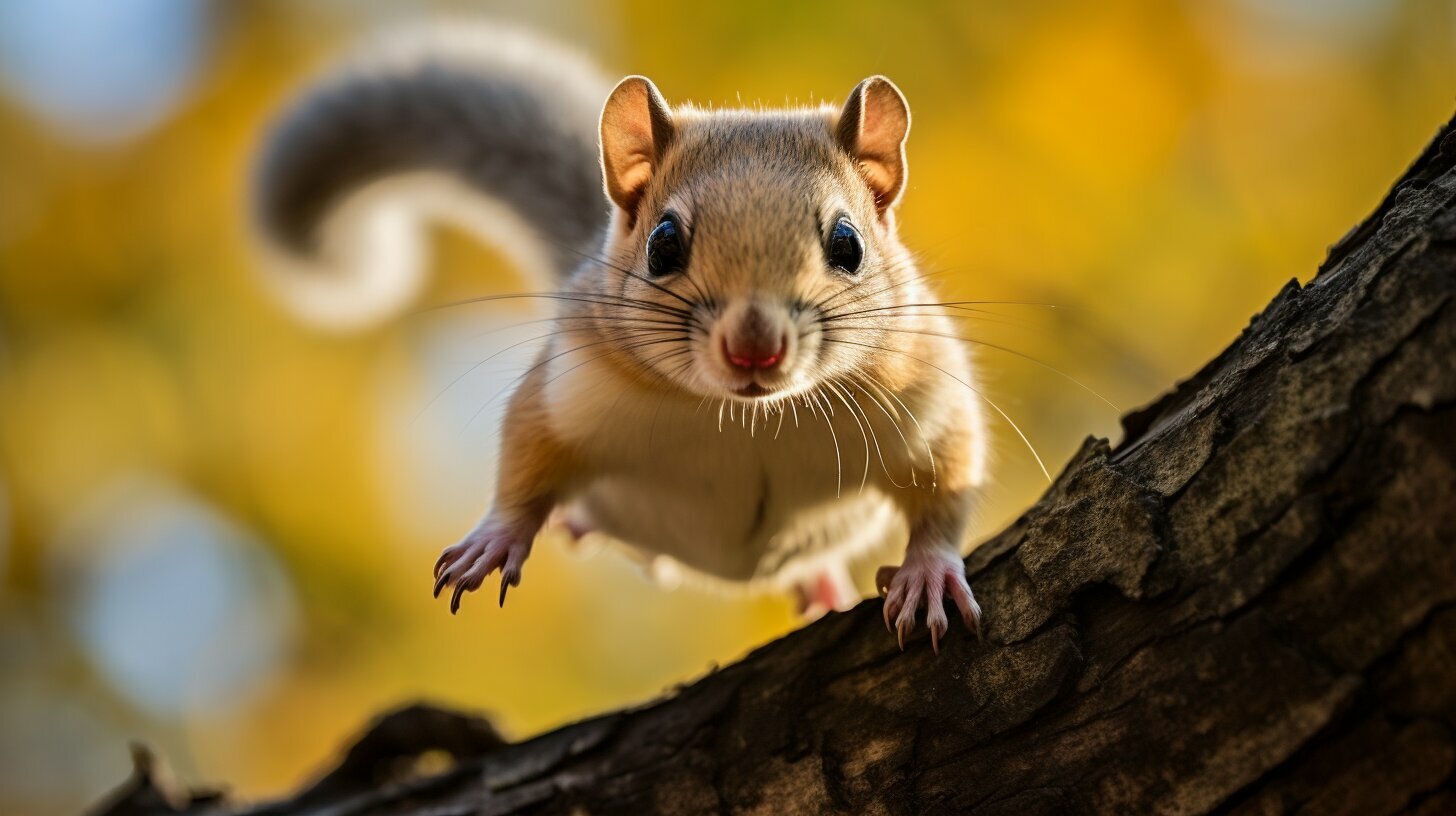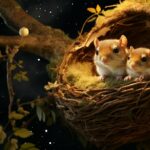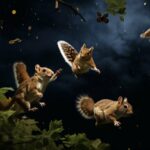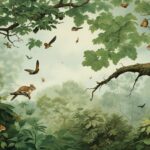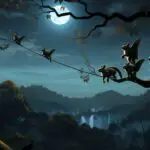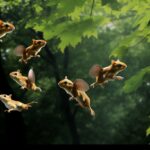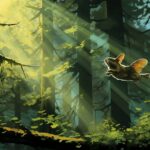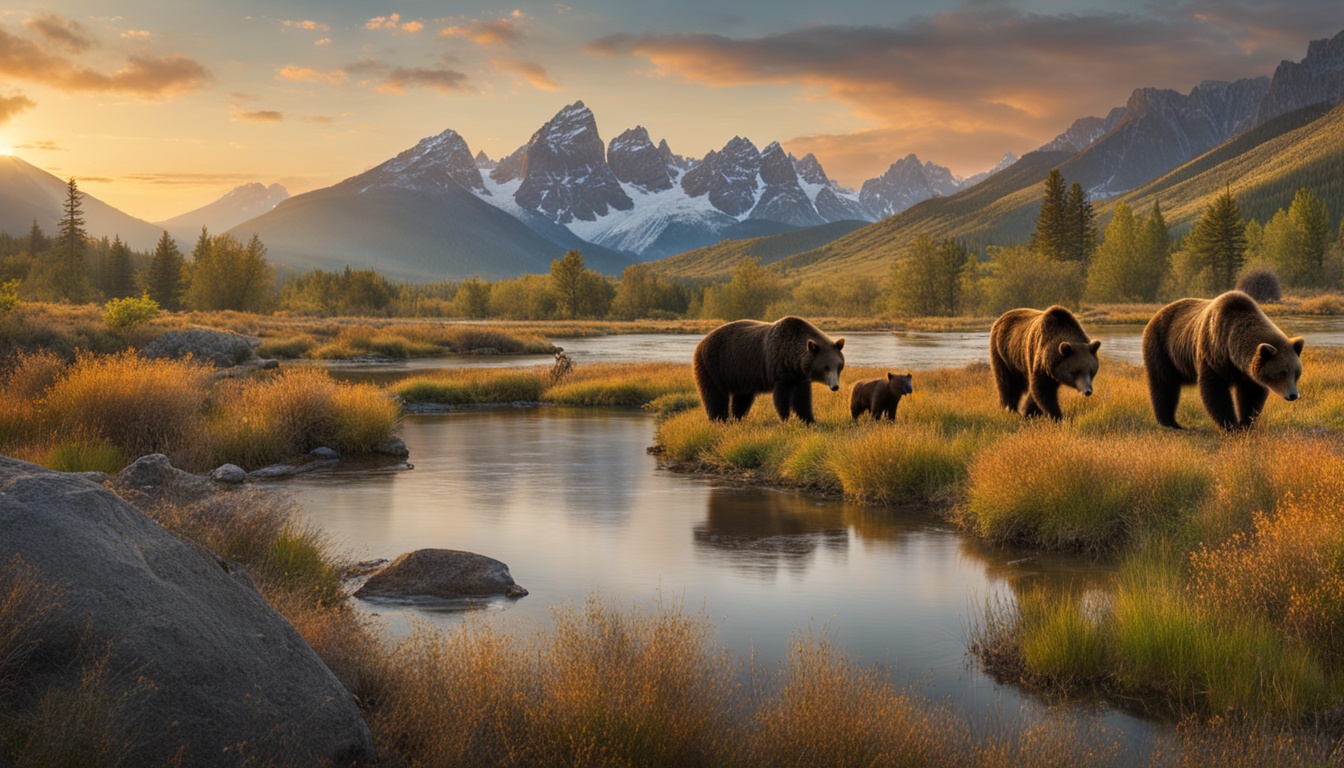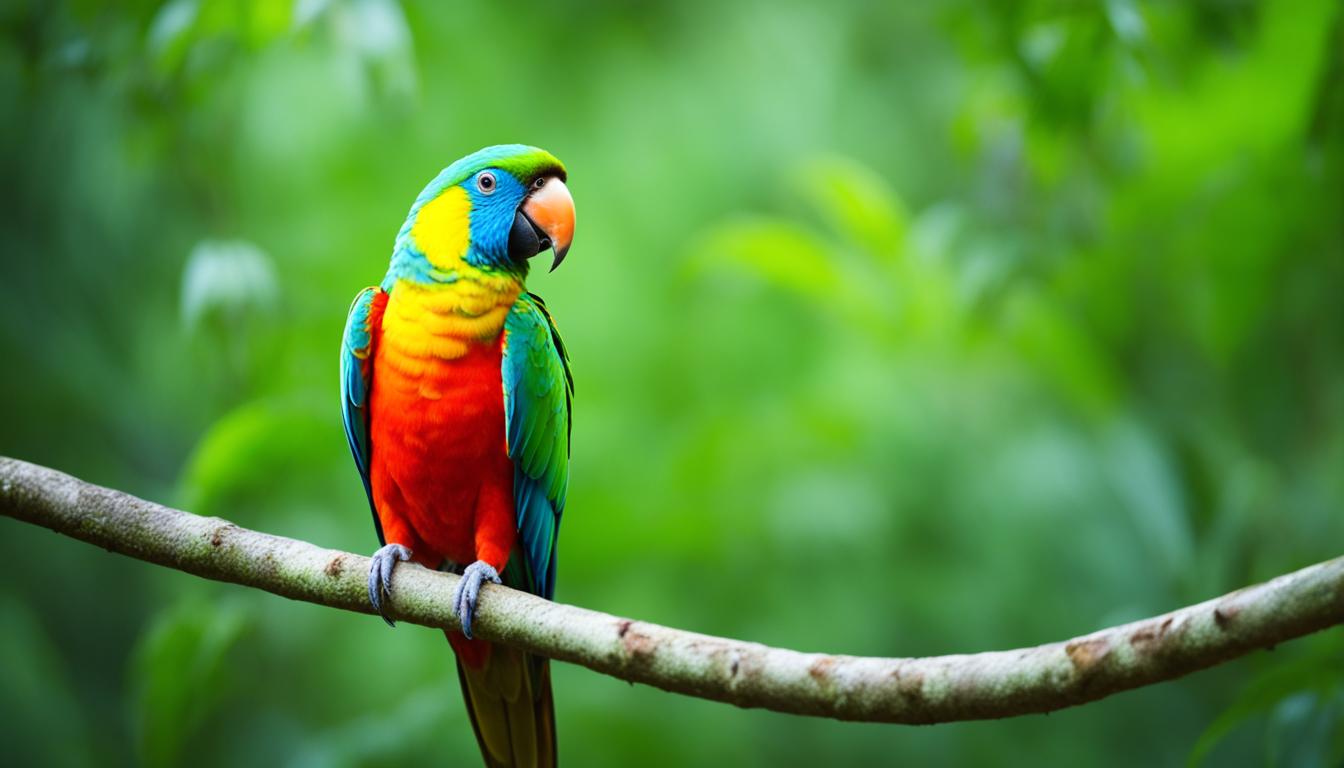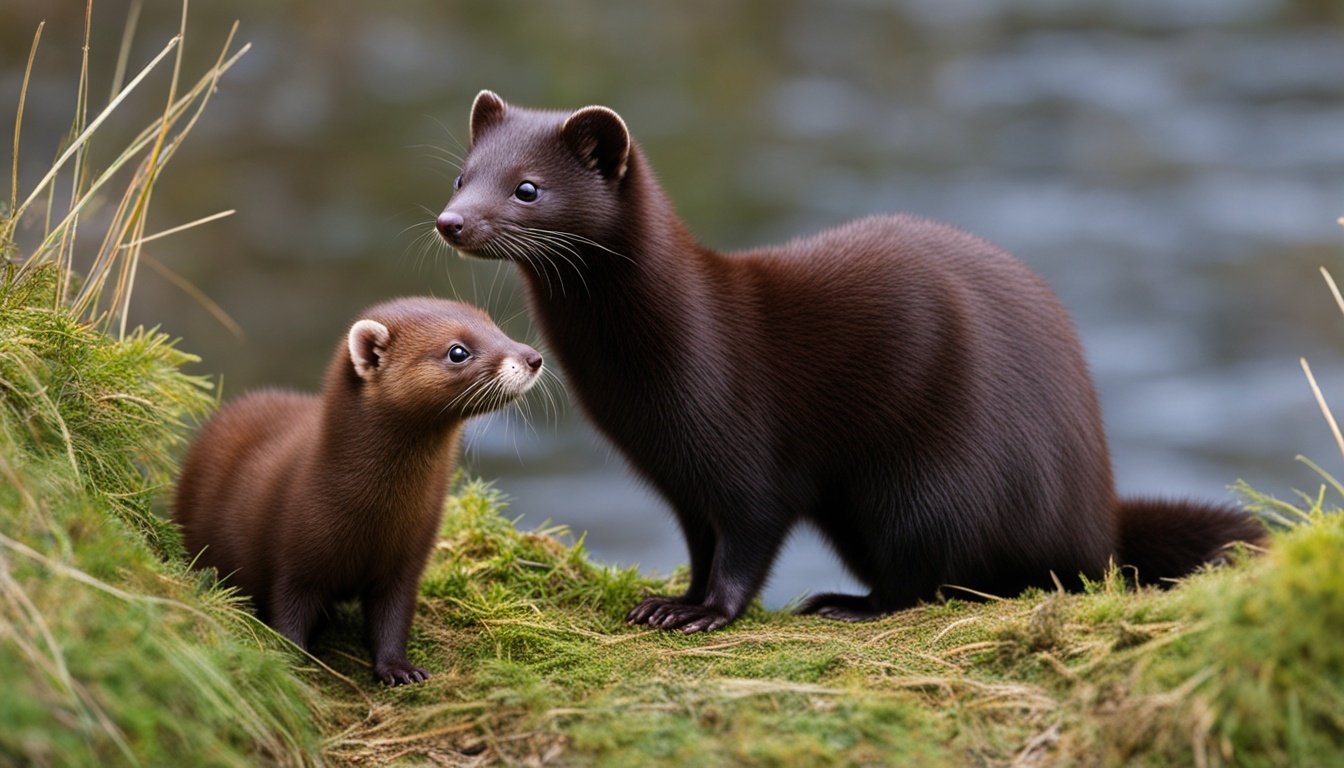If you’re curious about where to find flying squirrels in the United States, you’ve come to the right place. These fascinating creatures are known for their ability to glide through the air, making them a delight for nature enthusiasts to observe in their natural habitats. Let’s dive into the world of flying squirrels and discover the best locations to catch a glimpse of these amazing creatures.
Key Takeaways:
- Flying squirrels are small mammals that can glide through the air using a furry membrane called the patagium.
- They are found in various locations across North America, Central America, Southeast Asia, and Northern Asia.
- Flying squirrels prefer to make their homes in tree cavities in forests and woodlands.
- Their diets vary depending on their location, with some species eating insects, seeds, nuts, and fungi.
- Flying squirrels have unique reproductive patterns, with some species having one mating cycle per year and others having two.
Understanding Flying Squirrel Habitats
Flying squirrels can be found in a variety of habitats across the United States, ranging from forests and woodlands to urban areas with sufficient greenery. These small mammals are well-adapted to life in trees, using their impressive gliding abilities to navigate their surroundings.
In forests and woodlands, flying squirrels prefer areas with mature trees that provide ample tree cavities for nesting. These cavities serve as their primary homes, offering protection and shelter from predators and inclement weather. Flying squirrels are also known to inhabit urban areas that have suitable vegetation, such as parks and gardens. With increasing urbanization, these adaptable creatures have found ways to coexist with humans, making use of artificial structures like birdhouses and attics for nesting.
When it comes to their geographic distribution, flying squirrels can be found in different regions of the United States. For example, Southern flying squirrels are commonly found in the forests of the eastern and southeastern states. These nocturnal animals are most active during the night, using their patagia to glide gracefully from tree to tree in search of food.
To get a better understanding of the habitats favored by flying squirrels in specific locations, refer to the table below:
| Species | Habitat | Diet |
|---|---|---|
| Northern Flying Squirrel | Coniferous forests in the northern states | Seeds, nuts, fungi, insects |
| Southern Flying Squirrel | Deciduous and mixed forests in the eastern and southeastern states | Nuts, acorns, insects, birds, eggs |
| Northern Flying Squirrel (Southeastern subspecies) | Deciduous forests in the southeastern states | Seeds, nuts, fungi, insects |
Understanding the habitats preferred by flying squirrels is crucial for conservation efforts. By preserving and protecting these habitats, we can ensure the continued survival of these fascinating creatures and the diverse ecosystems they inhabit.
Spotting and Observing Flying Squirrels
Spotting flying squirrels can be a thrilling experience, but it requires some knowledge and patience. These elusive creatures are primarily active at night, so your best chance to observe them is during the twilight hours of dawn and dusk. Here are some tips for locating and observing flying squirrels in their natural habitat:
- Choose the right location: Flying squirrels are most commonly found in wooded areas with plenty of mature trees. Look for forests or woodlands that provide ample tree cavities for them to nest in.
- Listen for their calls: Flying squirrels communicate through a series of chirps and clicks. By familiarizing yourself with their unique vocalizations, you can increase your chances of detecting their presence.
- Use a red light: Flying squirrels have a special adaptation in their eyes that allows them to see in low light conditions. To avoid startling them, use a red light instead of a bright flashlight when observing them at night.
- Set up a feeding station: To attract flying squirrels to a specific area, you can create a feeding station with nuts, seeds, or fruits. Be patient and allow them time to discover the food source.
Remember to maintain a respectful distance from these wild creatures and avoid disturbing their natural behavior. Observing flying squirrels can provide valuable insights into their behavior and contribute to our understanding of their ecology. By following these tips and respecting their habitat, you can have a rewarding experience in spotting and observing flying squirrels in action.
Testimonial:
“I’ve always been fascinated by wildlife, and spotting flying squirrels was a dream come true for me. It was incredible to witness their gliding abilities and see how they effortlessly navigate through the trees. Following the tips I learned, I was able to spot these amazing creatures in their natural habitat. It truly was a memorable experience!”
Table: Flying Squirrel Species and their Preferred Habitats
| Flying Squirrel Species | Preferred Habitats |
|---|---|
| Northern Flying Squirrel | Boreal forests, coniferous forests |
| Southern Flying Squirrel | Deciduous forests, mixed hardwood forests |
| Japanese Flying Squirrel | Mountainous forests, temperate forests |
| Siberian Flying Squirrel | Taiga forests, mixed forests |
Interesting Facts About Flying Squirrels
Flying squirrels are fascinating creatures with a range of unique characteristics and behaviors. These small mammals, known for their gliding abilities, have captured the curiosity of both scientists and nature enthusiasts alike. Here are some intriguing facts about these incredible creatures:
- Glide through the air: Flying squirrels have a remarkable skill for gliding through the air. Using their patagium, a furry membrane that stretches from their wrists to their ankles, they can gracefully navigate the skies. With the ability to make 180-degree turns in mid-air, flying squirrels can swiftly escape predators or travel between trees.
- Varied species: There are approximately 50 species of flying squirrels found across different parts of the world. From North America to Asia, these squirrels have adapted to various habitats and environments. Each species exhibits unique characteristics and physical features, such as different fur colors and markings.
- Diverse diets: Flying squirrels have varied diets depending on their location. Some species primarily feed on insects, seeds, nuts, and fungi, while others have a preference for cultivated fruit. Their ability to adapt their diet to the available resources contributes to their successful survival in different habitats.
- Family-oriented: Flying squirrels are known for their social behavior, often nesting together in family groups. This communal living helps them stay warm during the winter months. In addition, some species of flying squirrels have fascinating reproductive patterns, with one or two mating cycles per year.
- Conservation concerns: Unfortunately, flying squirrels face several threats. Habitat destruction, hunting, and trapping pose significant risks to their populations. Increased awareness and conservation efforts are necessary to protect these unique creatures and ensure their continued survival in the wild.
These facts offer just a glimpse into the captivating world of flying squirrels. From their extraordinary gliding abilities to their diverse habitats and diets, these creatures have truly earned their place among the most intriguing mammals on our planet.
| Species | Location | Diet |
|---|---|---|
| Southern Flying Squirrel | Iowa | Nuts, acorns, insects, birds, eggs, carrion |
Conclusion
In conclusion, knowing where to find flying squirrels and understanding their habitats can greatly enhance your chances of observing these elusive creatures in the wild. Flying squirrels are fascinating mammals known for their ability to glide through the air using a furry membrane called the patagium. With about 50 species found across North America, Central America, Southeast Asia, and Northern Asia, these remarkable creatures make their homes in tree cavities in forests and woodlands.
Flying squirrels have distinct features that set them apart from their grounded cousins, including small rounded faces, fluffy tails, and varying fur colors and markings. Their diets vary depending on their location, with some species feasting on insects, seeds, nuts, and fungi, while others prefer cultivated fruit.
Understanding the reproductive patterns of flying squirrels is also crucial in spotting and observing them. Some species have one mating cycle per year, while others have two. During the winter, flying squirrels nest together in family groups to keep warm. Unfortunately, these extraordinary creatures face threats such as habitat destruction, hunting, and trapping, making conservation efforts crucial to their survival.
By venturing into mature forests in places like Iowa, you may have the opportunity to spot the smallest squirrels in the area, the Southern flying squirrels. These agile creatures use their patagia to glide between trees and are known to huddle together in tree cavities during the winter. Their diet consists mainly of nuts and acorns, but they are also known to consume insects, birds, eggs, and carrion. Additionally, it’s worth noting that flying squirrels are one of the only mammals known to fluoresce under ultraviolet light.
How Do Flying Squirrels’ Adaptations Help Them Survive in the Wild?
Flying squirrel adaptation wonders explained: Flying squirrels have several key adaptations that help them survive in the wild. Firstly, their webbed skin between their limbs, known as patagium, allows them to glide effortlessly from tree to tree. Their large, round eyes help them navigate through the darkness, while their sharp claws and strong hind legs enable them to climb and leap with ease. These remarkable adaptations enable flying squirrels to find food, escape predators, and thrive in their forest habitats.
FAQ
Q: Where are flying squirrels found?
A: Flying squirrels are found across North America, Central America, Southeast Asia, and Northern Asia.
Q: What do flying squirrels eat?
A: Flying squirrels have varying diets depending on their location, with some species eating insects, seeds, nuts, and fungi, while others prefer cultivated fruit.
Q: How do flying squirrels reproduce?
A: Flying squirrels have unique reproductive patterns, with some species having one mating cycle per year and others having two. They usually nest together in family groups to keep warm in the winter.
Q: What threats do flying squirrels face?
A: Some species of flying squirrels are facing threats such as habitat destruction, hunting, and trapping.
Q: Where can I find Southern flying squirrels in Iowa?
A: Southern flying squirrels, the smallest squirrels in Iowa, can be found in mature forests where they can glide between trees using their patagia.
Q: What do Southern flying squirrels eat?
A: Southern flying squirrels mainly eat nuts and acorns, but they are also known to eat insects, birds, eggs, and carrion.
Q: Are flying squirrels bioluminescent?
A: No, but they are one of the only mammals known to fluoresce under ultraviolet light.

